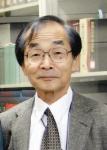Org. Synth. 2011, 88, 202-206
DOI: 10.15227/orgsyn.088.0202
Discussion Addendum for:PALLADIUM-CATALYZED REACTION OF 1-ALKENYLBORONATES WITH VINYLIC HALIDES: (1Z,3E)-1-PHENYL-1,3-OCTADIENE
Submitted by Norio Miyaura
†
Discussion
The cross-coupling reactions of organoboronic acids have proved to be a general reaction for a wide range of selective carbon-carbon bond forming reactions in laboratories and in industry since they involve convenient reagents that are generally thermally stable and inert to water and oxygen, thus allowing handling without special precautions.These reactions have been reviewed.
1
Synthesis of 1-Alkenylboron Compounds
Hydroboration of alkynes is especially valuable in the synthesis of stereodefined 1-alkenylboron compounds.Disiamylborane (HB(Sia)
2), dicyclohexylborane, and 9-BBN are very mild and selective hydroboration reagents to obtain 1-alkenylboranes.The addition of catecholborane (HBcat)
2 or dihaloborane (HBCl
2.SM
2, HBBr
2.SMe
2)
3 to alkynes followed by hydrolysis with water is a method for the synthesis of air-stable 1-alkenylborinic acids (
3).Since hydroboration yields (
E)-adducts through the
anti-Markovnikov and
syn-addition of an H-B bond to terminal alkynes, (
Z)-1-alkenylboronates have been synthesized by a two-step method based on intramolecular S
N2-type substitution of 1-halo-1-alkenylboronates with metal hydrides
4 or
cis-hydrogenation of 1-alkynylboronates.
5 Rhodium(I)/
i
Pr
3P-catalyzed hydroboration is a new variant for the one-step synthesis of (
Z)-1-alkenylboron compounds (
6) from terminal alkynes.
6 On the other hand, the palladium-catalyzed borylation of 1-alkenyl halides or triflates with bis(pinacolato)diboron provides (Z)-1-alkenylboronic pinacol esters.
7 The pinacol esters (
5,
6) are advantageous over the boronic acids with regard to the preparation and handling of pure and stable materials since they are stable to air and moisture, GC analysis, and chromatographic isolation on silica gel.Treatment of boronic acids with KHF
2 results in spontaneous precipitation of stable and highly insoluble [1-alkenylBF
3]K (
4).
8
,
18 All of those derivatives have been successfully used for various cross-coupling reactions.
Cross-Coupling Conditions (Table 1)
Cross-coupling reactions of 1-alkenylboron compounds with 1-alkenyl halides require a relatively strong base in the presence of a palladium/phosphine catalyst.The relative rate is in the order of their basic strength and affinity of the counter cations for halide anions (TlOH > KOH > K3PO4 > Na2CO3 > NaOAc).Aqueous NaOH has been used for 1-alkenylboronic acids or esters in refluxing THF-H2O, DME-H2O (entry 3), or benzene-H2O (entry 6) and aqueous LiOH (entry 2) for disiamylborane derivatives.In spite of its toxicity, TlOH is an excellent base that enables completion of the coupling within one hour at room temperature (entry 4).Since an aqueous solution of TlOH precipitates brown-black solids under careful storage conditions, addition of TlOEt to aqueous THF was recently recommended as a suitable replacement for air-sensitive TlOH (entry 5).
Synthetic Applications
Alkenyl-alkenyl cross-coupling affords various stereodefined dienes, trienes, and further conjugated polyenes for the synthesis of biologically active natural products,
1 including palytoxine,
19 (-)-bafilomycin A
1,
20 a combinatorial synthesis of vitamin D
3 derivatives,
21 a macrolide antibiotic, rutamycin B,
22 and 5,6-DiHETE Methyl Esters.
 |
Norio Miyaura was born in Hokkaido in Japan in 1946.He received his B.Eng.and Dr.Eng.from Hokkaido University.He became a Research Associate and an Associate Professor in the A.Suzuki research group, and then was promoted to the rank of Professor in the same group in 1994.He is now emeritus and a specially appointed Professor after his retirement from Hokkaido University in 2010.In 1981, he joined the J.K.Kochi group at Indiana University as a postdoctoral fellow to study the epoxidation of alkenes catalyzed by metal-salen complexes.His current interests are mainly in the field of metal-catalyzed reactions of organoboron compounds, with emphasis of applications to organic synthesis such as catalyzed hydroboration, palladium-catalyzed cross-coupling reactions of organoboronic acids, rhodium- or palladium-catalyzed conjugate addition reactions of arylboronic acids, and addition and coupling reactions of diborons and pinacolborane for the synthesis of organoboronic esters. |
Copyright © 1921-, Organic Syntheses, Inc. All Rights Reserved